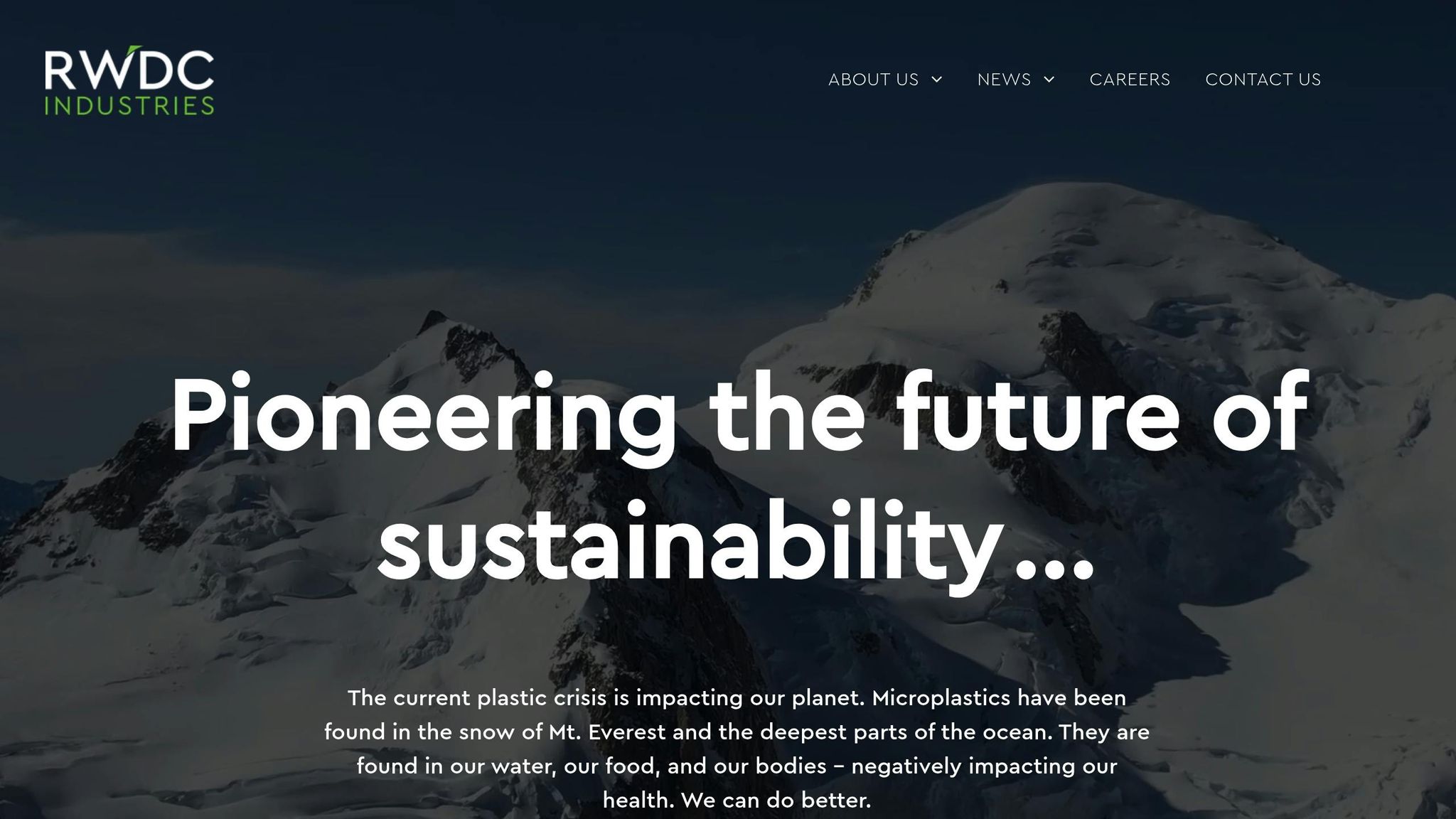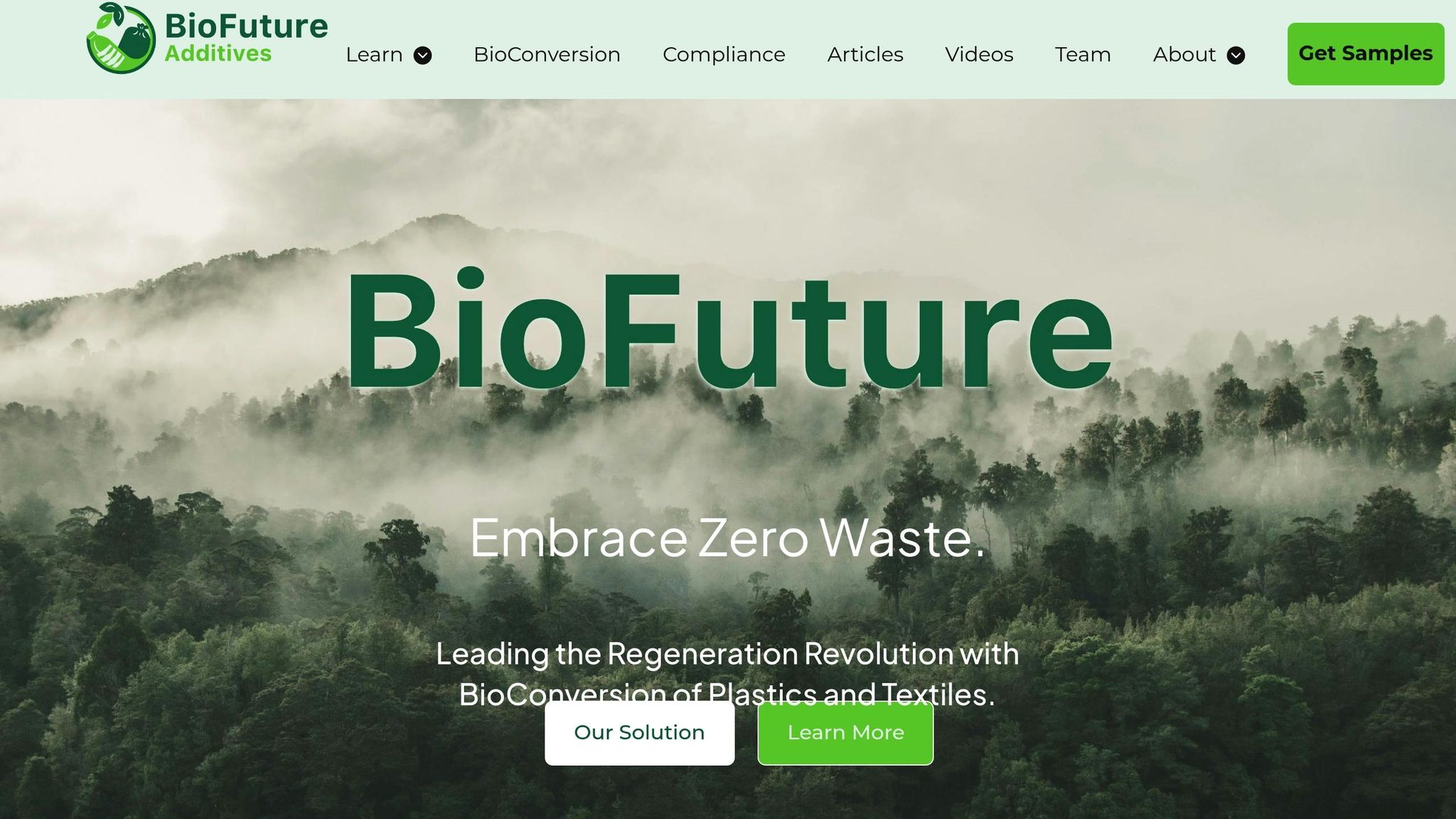
October 3, 2025
Plastic waste is a growing problem, but there’s a solution that could help tackle it: organic additives. These specially designed compounds help plastics break down faster in microbe-rich environments, turning them into harmless biomass. They don’t compromise the strength of plastics during use but activate decomposition only at the end of the product’s life.
Key Takeaways:
This approach not only reduces the long-term presence of plastics but also aligns with modern recycling systems, offering a practical way to address the plastic waste crisis.
BioFuture Additives' organic additives work by tweaking the chemistry of plastics. When these additives are mixed into plastic during its production, they preserve the material's strength for everyday use while making it more attractive to microorganisms in environments rich with microbes. In these conditions, the plastic eventually breaks down into non-toxic biomass, naturally reentering the carbon cycle.
Factors like moisture and temperature play a role in this transformation. The additives are designed to stay stable throughout the product's life, only activating when the product has reached the end of its usefulness. This ensures that the plastic doesn't degrade prematurely but still addresses the long-term issue of plastic waste.
This chemical adjustment sets the stage for plastics to break down biologically in a more efficient way.
When plastics treated with these additives find their way into microbial-rich environments, bacteria and fungi step in to do the heavy lifting. These microorganisms break down the material, leaving behind byproducts that are safe for the environment. Independent testing has confirmed that this process doesn’t harm soils, waterways, or wildlife.
To ensure both performance and environmental safety, BioFuture Additives relies on established ASTM testing standards. These include ASTM D5511 for anaerobic conditions like those in landfills, ASTM D6691 for marine environments, and ASTM D5338 for composting scenarios. Regular third-party testing and close monitoring confirm that the enhanced plastics meet strict environmental criteria, supporting efforts to create a more sustainable, circular economy.
BioFuture Additives are designed to seamlessly fit into existing production lines without requiring any changes to equipment. Whether it's injection molding, extrusion, or blow molding, these additives can be incorporated effortlessly. This means manufacturers can avoid costly upgrades or retraining their workforce.
This straightforward integration ensures compatibility with a wide range of materials.
BioFuture Additives work with an impressive variety of polymers, including PET, PE, PP, PS, PVC, and PLA. They’re also suitable for more specialized materials like polyurethane, nylon, and ABS. This means companies can continue using their preferred base materials while still producing biodegradable products.
Additionally, these additives are effective with biopolymers and synthetic textiles, making them ideal for manufacturing biodegradable clothing, upholstery, and industrial fabrics. This flexibility has opened the door to creative uses across multiple industries.
Packaging companies are using BioFuture Additives to produce sustainable food containers, shopping bags, and protective packaging that safely decompose after disposal. In consumer goods, these additives are being added to items like storage containers, toys, and personal care product packaging, ensuring they remain durable and safe. Meanwhile, textile manufacturers are leveraging this technology to create biodegradable synthetic fabrics for clothing and home furnishings, offering eco-friendly alternatives without compromising quality.

BioFuture Additives bring a range of advantages that address environmental concerns, economic considerations, and sustainable practices.
Unlike conventional plastics that linger in nature for decades, BioFuture Additives help plastics break down much faster. In environments like landfills or composts, they decompose into safe, non-toxic biomass, reducing the long-term impact on ecosystems.
These additives promote a shift away from the traditional "use and discard" model by supporting circular usage. They help cut down on the lasting presence of plastics while aligning with carbon neutrality goals. Plus, they work seamlessly with current recycling systems, reinforcing the push toward a more sustainable economy.
Using BioFuture Additives doesn’t increase costs but maintains product quality, giving businesses a competitive edge. By adopting sustainable materials now, companies can stay ahead of evolving environmental regulations and potentially lower future waste management expenses. This makes BioFuture Additives a smart choice for businesses aiming to embrace greener manufacturing practices.

Here’s how manufacturers can integrate BioFuture Additives into their production processes in three straightforward phases:
By following these steps, your operations will be ready for the necessary regulatory and performance monitoring phases.
Staying compliant with regulatory standards is critical for sustainable manufacturing. BioFuture Additives already meet U.S. safety, environmental, and food-contact application standards. To maintain compliance:
These efforts not only align with BioFuture Additives' focus on a circular economy and carbon neutrality but also help you consistently verify biodegradation performance.
These steps ensure that your adoption of BioFuture Additives is both efficient and aligned with industry standards, setting you up for long-term success.
The plastic waste crisis demands solutions that deliver real-world results, and organic additives offer a practical path forward. These additives enable manufacturers to produce plastics that break down in microbe-rich environments, all while maintaining the durability, quality, and affordability that industries rely on.
By leveraging established science, these additives speed up the biodegradation process without compromising the manufacturing process. From packaging to textiles, they help industries transform plastic waste into non-toxic biomass, reducing environmental harm.
A standout benefit of these additives is their compatibility with existing recycling and production systems. Companies can integrate them seamlessly, meeting regulatory standards and addressing consumer expectations for sustainable products - without overhauling their operations.
This approach provides manufacturers with a clear pathway to adopt biodegradable solutions while staying competitive in the market. BioFuture Additives, with its emphasis on carbon neutrality and the circular economy, empowers businesses to lead in sustainable manufacturing. As regulations grow stricter and consumer demand for eco-friendly options intensifies, companies embracing biodegradable additives will gain a clear edge.
The future of plastics lies in working in harmony with nature. By adopting organic additives that allow plastics to decompose naturally in landfills, oceans, and composting facilities, manufacturers can create a sustainable production cycle. This benefits both their bottom line and the planet, paving the way for a greener, more responsible future for the industry.
BioFuture Additives are specially formulated to activate under specific conditions, like those found in landfills or composting facilities. They interact with the unique microbial activity present in these environments, ensuring that plastics stay intact during their normal use and only begin breaking down when disposed of in the right setting.
This carefully managed process avoids early degradation, making the additives reliable for everyday use while contributing to responsible waste management and environmental care.
To ensure BioFuture Additives are safe for the environment and perform as intended, they undergo thorough testing based on internationally recognized standards. These include ASTM D5338, D6400, ISO 17088, EN 13432, and D5988. These standards assess critical factors like biodegradation rates, compostability, and safety in different environmental conditions.
This rigorous testing confirms that the additives effectively break down plastics into non-toxic components, offering a dependable way to tackle plastic waste.
Manufacturers can integrate BioFuture Additives into their production processes without any additional costs or the hassle of upgrading equipment. These additives are crafted to blend effortlessly into existing workflows, so there’s no need to modify machinery, molds, or production lines.
This allows businesses to embrace more sustainable practices without disrupting operations or driving up expenses - a straightforward and environmentally conscious way to tackle plastic waste.